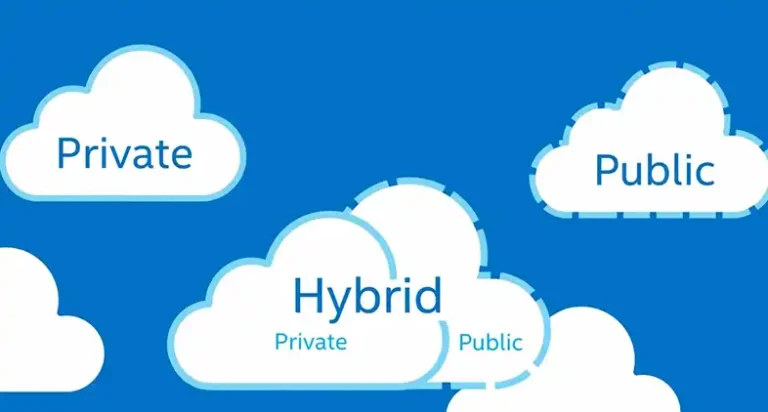What Is A Difference Between The Functions Of Cloud Computing And Virtualization? [Answered]
Cloud computing is a paradigm characterized by the delivery of an array of computing services, encompassing but not limited to storage, processing power, and applications, via the internet. Conversely, virtualization is a foundational process involving the creation of virtual instances or representations of computing resources.
To have more head-on-head, here we go.

Functions of Cloud Computing
Here are some functions of cloud computing:
On-Demand Resource Provisioning
Cloud computing’s hallmark is the dynamic allocation and de-allocation of resources in response to fluctuating demand. This ensures optimal resource utilization, cost-efficiency, and responsiveness to changing computational requirements.
Accessibility and Collaboration
The ubiquitous accessibility facilitated by cloud computing transcends geographical constraints, fostering seamless collaboration among dispersed teams. This is achieved by enabling users to access data and applications from any location with an internet connection.
Cost-Efficiency
Cloud computing introduces a paradigm shift by eliminating the need for capital-intensive physical infrastructure. This inherently translates to cost efficiency, as users only pay for the resources consumed.
Functions of Virtualization
This is how virtualization comes into play:
Server Virtualization
At the crux of virtualization lies server virtualization, a process wherein a hypervisor partitions a physical server into multiple virtual machines (VMs). This not only optimizes resource utilization but also enhances the scalability and manageability of server environments.
Resource Isolation
Virtualization engenders resource isolation, erecting virtual barriers between distinct virtual machines. This ensures that the execution of applications on one VM remains independent of others, mitigating the risk of interference or conflicts.
Disaster Recovery
Virtualization contributes significantly to robust disaster recovery strategies. By encapsulating entire virtual machines, organizations can easily replicate, backup, and restore these instances in the event of a catastrophic failure.
Distinguishing Features: Differences Between Cloud Computing And Virtualization
These are what they get apart from the other:
1. Ownership of Resources
A salient distinction lies in the ownership of resources. Cloud computing entails the utilization of resources provided by external service providers, whereas virtualization often involves creating and managing virtual instances on-premises, affording users greater control.
2. Service Models
Cloud computing is stratified into distinct service models, including Infrastructure as a Service (IaaS), Platform as a Service (PaaS), and Software as a Service (SaaS). In contrast, virtualization is a technology that transcends these service models and can be applied at different layers of the computing stack.
3. Resource Scaling
In cloud computing, scalability is often a key feature, allowing users to dynamically scale their resources up or down based on demand. Virtualization, while it provides some flexibility, may not offer the same level of automated, on-demand resource scaling.
4. Resource Efficiency
Cloud computing services aim to maximize resource utilization across multiple users through multi-tenancy. Virtualization, on the other hand, may involve the creation of virtual machines (VMs) that are not always fully utilized, leading to potential inefficiencies in resource allocation.
5. Cost Structure
Cloud computing typically follows a pay-as-you-go or subscription-based pricing model, where users pay for the resources they consume. Virtualization often involves upfront costs for hardware and software, and the ongoing costs are associated with maintenance and management.
6. Dependency on Physical Hardware
Virtualization relies on a hypervisor to create and manage virtual instances, but these instances are still dependent on the underlying physical hardware. Cloud computing abstracts away the physical infrastructure, providing a more abstract and scalable environment.
7. Geographical Distribution
Cloud computing services are often distributed across multiple data centers and geographical regions to enhance availability and redundancy. Virtualization, especially when implemented on-premises, may not have the same level of geographical distribution and redundancy.
8. Flexibility and Portability
Cloud computing services are designed to be accessed from anywhere with an internet connection, promoting flexibility and accessibility. Virtualization, especially if confined to on-premises infrastructure, may not offer the same level of flexibility and portability.
9. Ease of Management
Cloud computing platforms typically provide centralized management interfaces that simplify resource provisioning, monitoring, and scaling. Virtualization may require more hands-on management, especially when dealing with a large number of virtual machines distributed across different physical servers.
10. Vendor Lock-In
Cloud computing services may involve a degree of vendor lock-in, as migrating applications and data between different cloud providers can be challenging. Virtualization, while not entirely immune to vendor-specific technologies, may offer more flexibility in terms of moving virtualized workloads across different environments.
11. Network Integration
Cloud computing services often come with built-in networking features and capabilities. Virtualization may require additional configuration for networking, and the level of integration with networking services may vary based on the virtualization platform used.
12. Redundancy and High Availability
Cloud computing providers typically offer built-in redundancy and high availability features. Virtualization solutions may require additional configurations and planning to achieve the same level of redundancy and high availability, especially in on-premises deployments.
13. Scope of Application
Cloud computing casts a broad net, encompassing a myriad of services such as storage, databases, networking, analytics, and more. Virtualization, in contrast, hones in on optimizing and abstracting individual resources, primarily within the realm of computing.
14. Security Concerns
Both cloud computing and virtualization introduce unique security challenges, necessitating robust strategies to safeguard sensitive data and adhere to regulatory compliance.
Frequently Asked Questions (FAQs)
Q: Can virtualization exist independently of cloud computing?
A: Yes, virtualization can be implemented as an isolated technology, especially in on-premises data centers.
Q: How does cloud computing facilitate auto-scalability?
A: Cloud computing allows for the automatic scaling of resources based on demand, ensuring optimal performance during peak usage.
Q: Are there inherent security risks in server virtualization?
A: While virtualization enhances security through isolation, potential vulnerabilities may arise if not configured and managed meticulously.
Conclusion
It’s important to note that both cloud computing and virtualization are complementary technologies, and organizations often use them in conjunction to achieve specific business objectives. The choice between them depends on factors such as scalability needs, resource control, cost considerations, and specific use case requirements.






